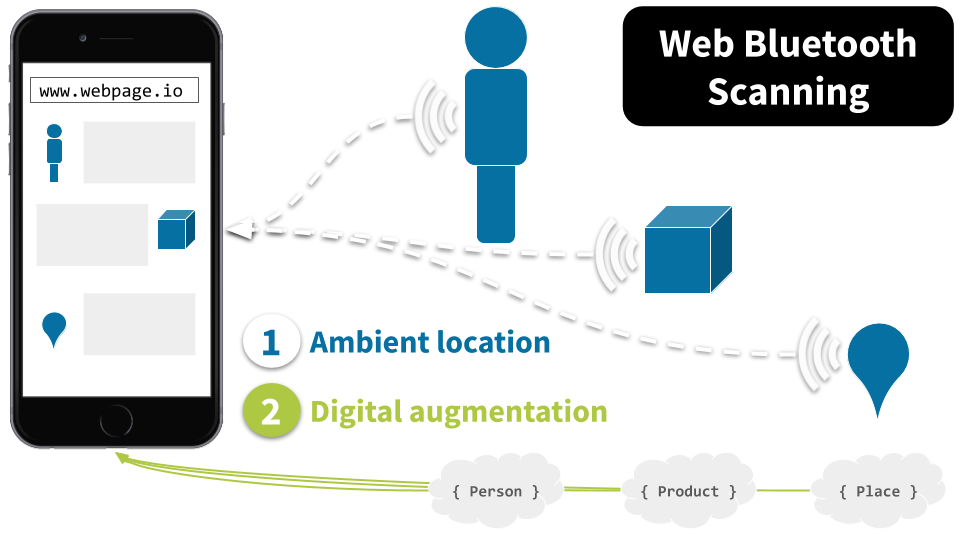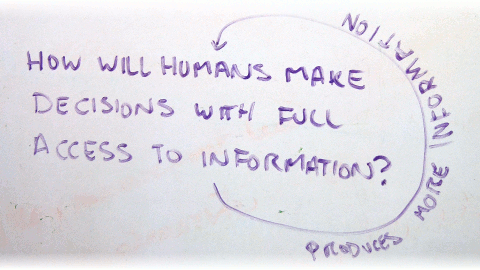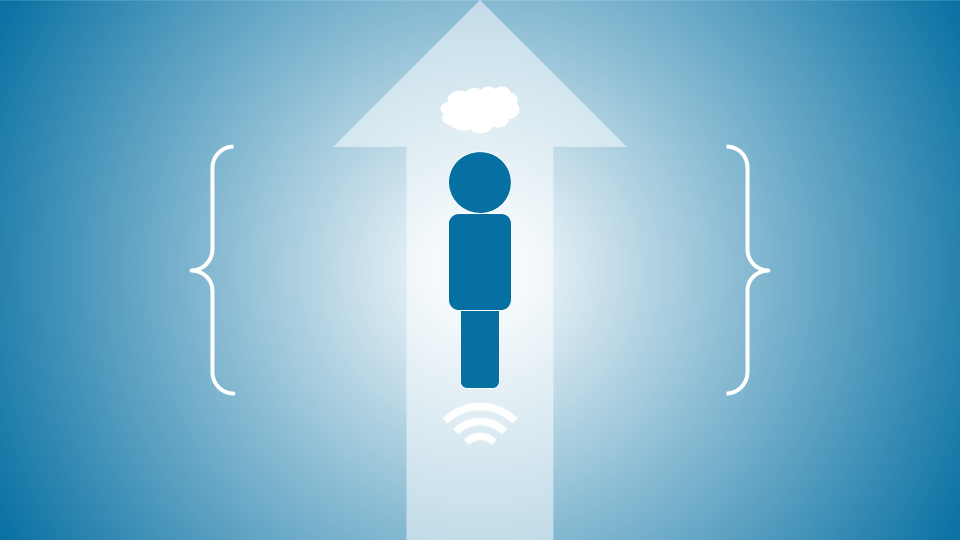In February of 2020, we updated the one-liner of landing page to Embrace the ambient data in your space. We did this for two reasons:
- observing and processing all the ambient wireless packets in a space is a key differentiator of our technology platform
- enhancing the human experience by augmenting physical presence with digital data is core to our vision
This post is about the second. It’s about the human experience. Following the update of our one-liner, we stumbled upon a book entitled Ambient Commons, published in 2013, a year after reelyActive was founded. Having recently read the Jaron Lanier’s prescient Who Owns the Future from the same year, discussed here in our blog, we were curious what author Malcolm McCullough might argue about “attention in the age of embodied information”, the subtitle of his book.

The notion of combining physical location (using RTLS) with digital augmentation (using the Web) is one of the founding insights of reelyActive. Ambient connectivity was already an established concept at the time thanks to widespread smartphone penetration. Ambient location however was a nascent idea, at least at a human scale, and was predicated on the emergence of new technologies.
Why combine connectivity with location? Ambient Commons addresses this from the start:
May the ambient invite tuning in instead of tuning out. May it do so with an emergent sense of a whole, or at least of continuum. Continuity seems lacking in a world full of separately conceived physical entities all competing for space and attention, all without concern for what is nearby, and masked by portals, links, and signs to someplace else.
In short, ambient connectivity creates countless possibilities to divert our attention elsewhere, without concern for what is nearby. This is where ambient location can act as a filter to “tune in” to one’s physical space and context.
Can the purpose of handheld electronic media move beyond communicating for the sake of communicating, beyond tuning out so much of the world through personalizing everything, to helping someone be here now, in the sense of knowing an urban commons?
Indeed! That was top of our mind too in 2013 when we discussed Helping your smartphone “baby” grow up. But alas, despite all the years that have passed, and despite our arguing in 2017 that we might be reaching peak mobile, today in 2020 our smartphones remain as capable as ever at diverting our attention away from our here and now.
How can electronic artifice bring alive a sense of belonging to the world, and not just suggest conquest, distraction, or escape?
Fortunately, two recent technologies offer cause for optimism.
Web Bluetooth Scanning affords a webpage contextual awareness of the people, products and places located in physical proximity of the browser. We created our Pareto Anywhere web app to demonstrate what might be called “physical browsing”, shown here on our IoT Day tour of Parc.

DirAct digitises real-time interactions as we show in this video, so that computers can interpret location as “who is interacting with who/what” rather than “who is where”. Interactions are often a clear indicator of intent, which is arguably the ideal filter for digital augmentation.

The physical spaces in which we live, work and play are increasingly occupied by technologies which serve as potential sources of distraction—but also as sources of ambient data for both location and digital augmentation. By embracing the ambient wireless packet data within a physical space, as made possible by our open source software, one can foster an ambient commons encouraging occupants to “tune in” and engage with one another and their surroundings at a human scale. This ambient commons is accessible through what the book describes as atmospheres, like those we explore in our art, and not just through a mobile app or browser.
In an age of distraction engineering, you have no choice but to manage your attention more mindfully. […] A new mindfulness to context becomes no mere luxury when the world becomes augmented, and the ambient takes form.

Our world has indeed become overwhelmingly augmented, with ever more media vying for our attention. We at reelyActive have always envisaged location as a filter, which today is arguably more a necessity than a luxury. Interestingly, the proliferation of technology engineered for distraction also represents an abundant source of ambient wireless packets awaiting to be harnessed in an ambient commons. That is why we now invite you to reconnect with your here and now simply by embracing the ambient data in your space.

Comments
2 responses to “Embrace the ambient data in your space”
[…] In 1920, experimental was the idea of a scheduled radio broadcast to an audience who would intentionally tune in at a regional scale. One hundred years later, radio broadcasts have gone from sparse to ubiquitous and from human-to-human (H2H) largely to machine-to-machine (M2M). As such, experimental today is the idea of spontaneous radio broadcasts to opportunistic machine-audiences at a human scale of no more than tens of metres. In other words, radio broadcasts have become ambient data, and, today, we are pioneering the opportunity to embrace the ambient data in your space. […]
LikeLike
[…] one-liner on our web page had fittingly become “Embrace the ambient data in your space” which coincided with the ambient technology concepts we discovered in Malcolm McCullough’s […]
LikeLike